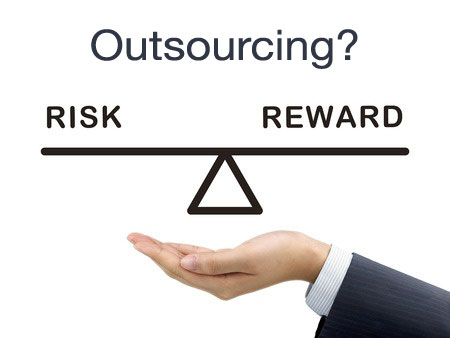
New business strategies arise daily, due to the active and dynamic growth of the IT sector. Insourcing and outsourcing are two common ways to develop your IT part of the business. There are a lot of qualified outsourcing IT companies that provide outsourcing IT services, like https://itsvit.com/, for example. But, firstly, let’s define what these terms mean and what’s the difference between IT outsourcing and insourcing.

What are IT outsourcing and insourcing? Outsourcing is a process of delegating part of the business tasks to another company. Outsourcing is used for the optimization of your company’s processes. Insourcing means you are providing all the required resources on your own.
We will describe the pros and cons of both models below.
Common benefits of outsourcing
Let’s have a look at the advantages you will have with IT outsourcing:
- lowering and controlling the costs – the work of IT outsourcing team will cost you less than the same work of the in-house team;
- focus on core business functions – you’ll allocate internal resources to more important parts of the project;
- access to new technology – you’ll use new software, databases, cloud computing, etc. with the support of your IT outsourcing provider;
- access to a large talent pool – you may choose a team from many countries not limited to your location.
Common benefits of insourcing
Insourcing has its own benefits, here they are:
- direct control – you can keep abreast of your processes, it simplifies management;
- no third-party involved – all your team and data are near you and you have access to them anytime;
As you see, all the benefits of insourcing are based on team location. This model can be useful for owners, who can’t trust an outsourcing company and are used to keeping in touch with all employees.
What risks are in it for you?
You need to estimate risks and understand how you’ll manage them before choosing between two strategies.

Outsourcing has the next common risks:
- management features – you’ll have a third-party team with their own vision and methods of work, with which you might disagree;
- quality of work – you might have a result worse than you expected.
But with a reputable outsourcing company, all of them become irrelevant. If you find a highly-rated Managed Service Provider with ample positive feedback, your business will prosper without listed risks.
Insourcing also has some risks, for example:
- duration of searching for specialists – you’ll need to make a lot of interviews to hire new specialists, on the other side – you’ll hire the whole team internally;
- increased spending – you’ll need to equip each new workplace.
Conclusion: outsourcing vs insourcing – what is better?
The best choice for your company totally depends on the specific project needs. As you see, both models have their pluses and minuses. Sometimes, the best way is to combine outsourcing with insourcing and perform different parts of work by different parts of the team.
Analyze the needs of your company before choosing an IT outsourcing strategy. This will help you make the right choice. And don’t forget that the success of IT outsourcing depends on how carefully you choose the Managed Service Provider.
